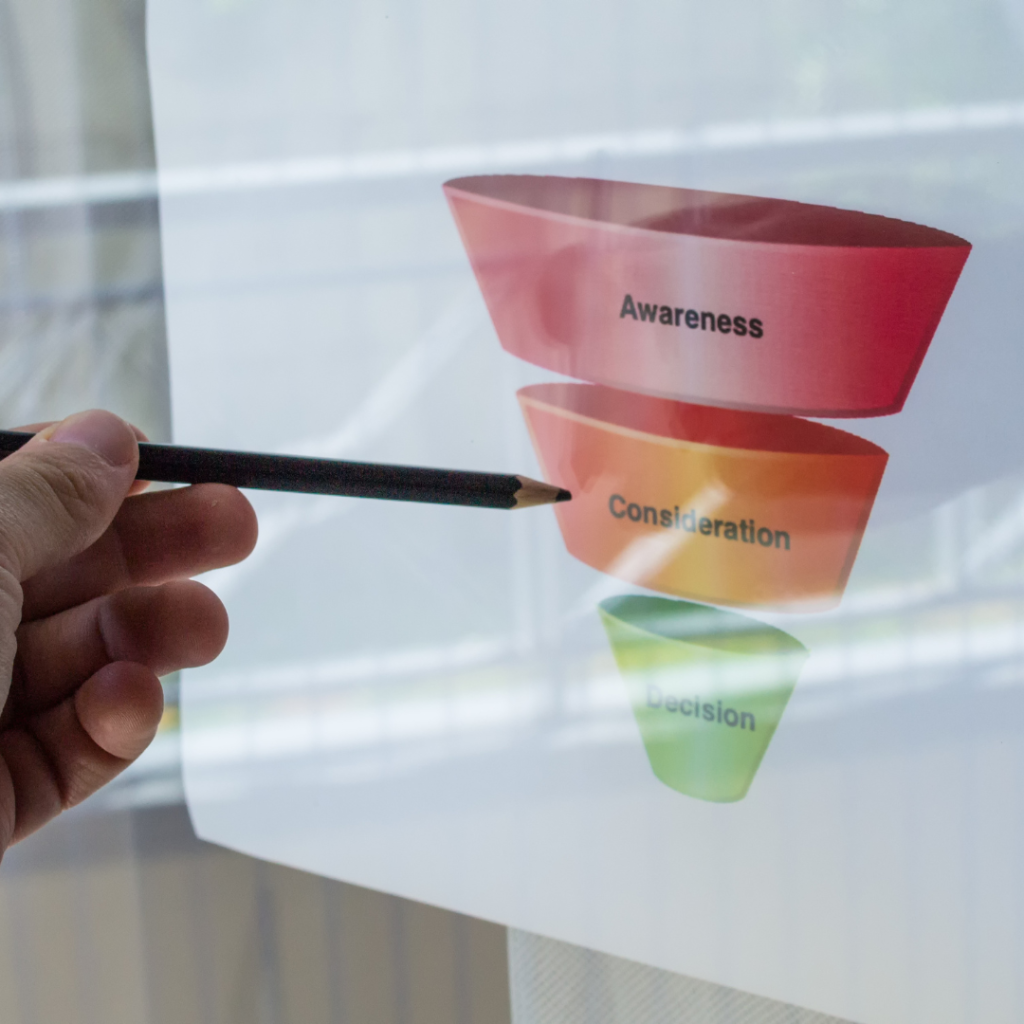If you’ve ever wondered how to transform curious prospects into loyal customers, understanding sales funnels is essential. This guide will break down the concept of sales funnels into practical steps, offering actionable insights to help you refine your sales process and boost conversions.
What is a Sales Funnel?
A sales funnel is a strategic model used to map out the journey of potential customers from their first interaction with your brand to the point of purchase. Think of it like a funnel used in the kitchen: you pour liquid into the top, which narrows down and flows out at the bottom. Similarly, a sales funnel starts with a broad range of prospects and narrows down as they move through the stages until they make a purchase.
The Four Key Stages of a Sales Funnel
1. Awareness: Attracting Potential Customers
The Awareness stage is where potential customers first encounter your brand. This stage is about reaching as many people as possible and making them aware of your products or services. Strategies for this stage include:
- Social Media Advertising: Utilize platforms like Facebook, Instagram, and LinkedIn to target specific demographics and increase visibility.
- Search Engine Marketing (SEM): Implement Google Ads to capture the attention of users searching for relevant keywords.
- Content Marketing: Publish blog posts, videos, and infographics that address common issues and attract organic traffic.
- Influencer Collaborations: Partner with influencers who can introduce your brand to their followers, enhancing your reach.
For instance, if your business specializes in handmade candles, you might use targeted Facebook ads showcasing your candle designs to attract users interested in home decor and artisanal products.
2. Interest: Engaging and Nurturing Leads
Once potential customers are aware of your brand, they enter the Interest stage. Here, the focus shifts to maintaining their interest and encouraging them to learn more about your offerings. Effective strategies include:
- High-Quality Content: Create content that provides value to your audience, such as how-to guides or detailed product information.
- Email Marketing: Collect email addresses through lead magnets like free eBooks or newsletters and nurture leads with personalized email sequences.
- Social Proof: Highlight customer testimonials, reviews, and case studies to build credibility and foster trust.
For a candle business, this could involve writing blog posts about the benefits of natural wax or hosting an Instagram giveaway to increase engagement.
3. Decision: Guiding Prospects to Choose Your Solution
During the Decision stage, prospects are evaluating their options and deciding whether to purchase from you. Your goal is to persuade them that your product or service is the best choice. Tactics for this stage include:
- Comparative Content: Provide detailed comparisons of your product versus competitors, highlighting unique features and benefits.
- Special Offers: Use discounts, limited-time offers, or promotions to incentivize prospects to choose your brand.
- Clear Calls to Action: Ensure your website and marketing materials have clear and compelling calls to action, guiding prospects toward making a purchase.
For example, if prospects are comparing your candles with others, you might offer a discount for first-time buyers or emphasize the quality and uniqueness of your product.
4. Action: Converting Leads into Customers
The Action stage is where prospects finally make a purchase decision. To facilitate this conversion, focus on:
- Seamless Checkout Process: Ensure that the checkout process is straightforward and user-friendly, minimizing friction and potential drop-offs.
- Customer Support: Provide excellent customer service to assist with any questions or concerns that might arise during the purchasing process.
- Post-Purchase Engagement: Follow up with customers after their purchase to encourage repeat business and foster loyalty.
In the case of your candle business, this might involve optimizing the checkout experience on your website and sending a thank-you email with a discount for future purchases.
Practical Tips for Optimizing Your Sales Funnel
- Analyze Funnel Performance: Regularly review the performance of each stage in your sales funnel using analytics tools to identify areas for improvement.
- Test and Refine: Continuously A/B test different strategies and tactics to determine what works best for your audience.
- Segment Your Audience: Tailor your messaging and offers based on different customer segments to increase relevance and effectiveness.
- Automate Where Possible: Use automation tools for email marketing and customer follow-ups to streamline processes and maintain consistent engagement.
Understanding and optimizing each stage of the sales funnel is crucial for driving conversions and maximizing revenue. By implementing these strategies and continually refining your approach, you can create a more effective sales process that attracts, engages, and converts potential customers.



